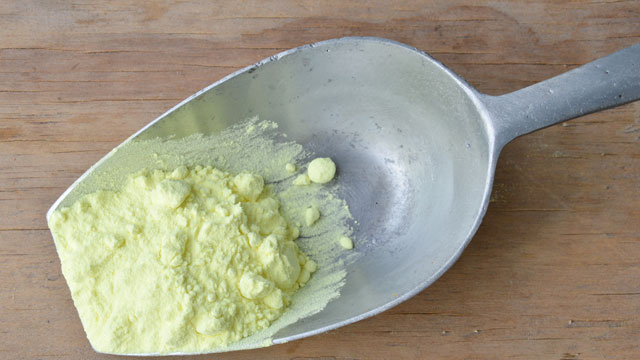
Soil amendments are materials that support the health of the soil. The amendments a garden needs depends on the composition of the soil and what plants the gardener plans to grow in it. The best way to find out what’s in their soil is for a gardener to send a sample to their local agricultural extension, which is most likely found in a local college. There the soil is tested and comes back with a report that lets the gardener know which amendments are needed.
Different Types of Soil Amendments Commonly Used in Gardening:
Amendments
Some amendments help the soil hold on to water, make it friable, add nutrients and correct the pH. They include:
Compost

Compost is any kind of organic material that’s broken down into its simpler components through the action of bacteria. Humus is a type of compost that has been only partially broken down. Gardeners can make their own compost pile from kitchen scraps and even old newspapers, as long as they only have black ink. – Be aware that color print publications may contain toxins you don’t want breaking down into the soil! – We put the emphasis on ‘may’ because it’s a call you have to make individually once you’re armed with all the facts. Organic materials that shouldn’t be added to a compost pile are the manure of carnivorous animals, charcoal, meat and plant matter that’s infested or diseased.
Mulch

Mulch is any material that covers the soil. Mulch does not even have to be organic and black plastic has been known to make excellent mulch. Its job is to keep the soil cool, help it retain water, and keep down on weeds.
Rotted Manure
Rotted manure is the dung of horses, cows or sheep mixed with bedding such as straw or wood shavings that’s then allowed to decompose. Rotted manure enhances the fertility of the soil and adds nutrients slowly, unlike fast-acting chemical fertilizers. It helps to break down heavy clay soils, improves the structure of sandy soils and attracts earthworms to the planting bed.
Peat Moss

Peat moss results when sphagnum moss and other organics break down in peat bogs. Because peat bogs are poor in oxygen, the moss takes thousands of years to really decompose. Peat moss is dark and fibrous, and used to lower the pH of the soil. This makes the soil more acidic, which is ideal for plants such as blueberries. Peat moss is an important ingredient in seed starting mediums, because it acts like a sponge and holds on to water and nutrients.
Leaf Mold
Like compost, leaf mold is an organic product that is broken down over time. In this case, it is made up of the leaves of hardwood shrubs and trees and is produced by the action of fungi instead of bacteria. Like compost, the gardener can make leaf mold at home. They can rake up the fallen leaves of the oak or maple trees in their yard, place them in a compost bin, and allow them to rot over the winter. However, the leaves need to be disease and pest free.
Leaf mold keeps the soil cool, maintains water and is rich in nutrients such as calcium, nitrogen, potassium, phosphorus, magnesium and sulfur as well as the trace minerals that plants need to grow and stay healthy.
Blood Meal
Blood meal is simply dried blood, usually from a cow that’s been processed at a slaughterhouse. It adds nitrogen to the soil and lowers the pH for acid-loving plants. Blood meal needs to be added judiciously to the soil because too much nitrogen can inhibit flowering and fruiting and may even burn the plants.
For a completely thorough guide to this amendment, see this related post by Fertilizer for Less: https://www.fertilizerforless.com/2020/05/21/blood-meal-fertilizer-uses-and-where-to-buy-online/.
Bone Meal
Like blood meal, bone meal is a product of animals that have been sent to the slaughterhouse. Made up of ground cow bones, it is an excellent, slow-acting fertilizer that adds calcium, nitrogen, phosphorus and potassium to the soil.
Lime
If a gardener learns that their soil is too acidic, they can add lime to “sweeten” it, or make it more alkaline. Sometimes if the soil is too acidic, it stops the plants from getting the nutrients they need. The two types of lime are agricultural lime and dolomite lime. Both types are rich in calcium, but dolomite lime is also rich in magnesium.
Sulfur

On the other hand, if the garden soil is too alkaline, it can be acidified with the addition of sulfur. Sulfur also reduces levels of sodium in the soil, and helps the plants synthesize enzymes and proteins. Most gardens don’t need a lot of sulfur to thrive.
There are, of course, many different amendments available to the savvy gardener and it’s too many for us to list today. Everything from coffee grounds to banana peels or biomass plants like comfrey can be used to add life and needed nutrients to the soil. This list should give you all you need to get started though, no matter what your soil test kit reveals. Best wishes for your garden, friends!

